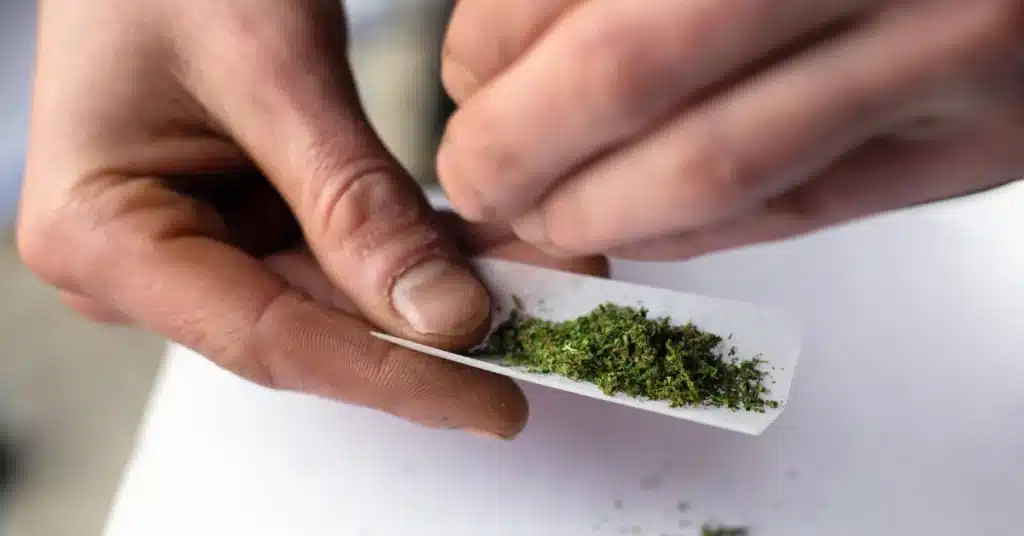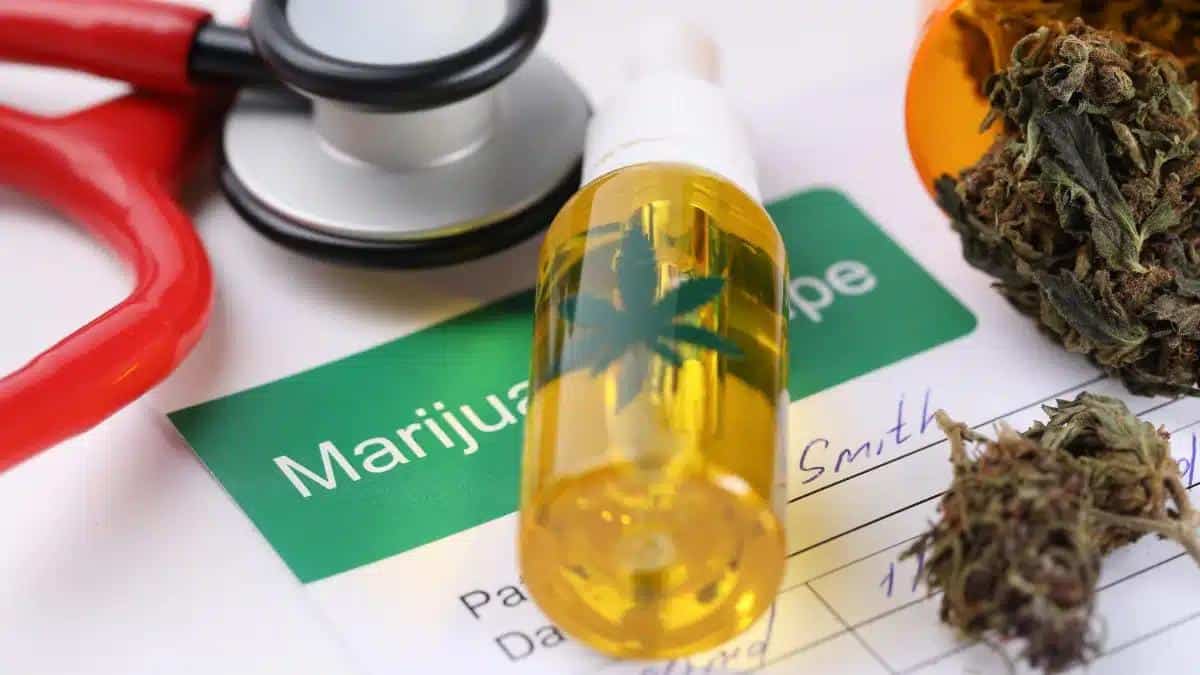Glaucoma is a group of eye disorders that involves damage to the optic nerve.
This initially impairs peripheral vision and ultimately leads to complete blindness.
Although several medications and surgical treatments are available for Glaucoma, many patients inquire about marijuana for Glaucoma.
In this article, we will discuss whether marijuana is helpful in treating Glaucoma and its potential risks in the long-term treatment of Glaucoma.
Marijuana for Glaucoma: Is weed good for Glaucoma
Marijuana is made up of dried flowering leaves and tips of the plant Cannabis sativa.
It contains two important components: Tetrahydrocannabinol (THC) and Cannabidiol (CBD).
Marijuana has been legal for medicinal or recreational use in several states of the U.S. and Canada.
Lately, it has gained increasing attention and discussion as a potential therapy for numerous health issues, including Glaucoma.
People with Glaucoma may find marijuana useful because TCH, the main component of marijuana, reduces eye pressure (Intraocular Pressure).
However, the impact of a single dose only lasts for eight hours.
THC can reduce intraocular pressure by up to 40% for around eight hours.
While THC decreases eye pressure only briefly, Glaucoma patients must maintain low eye pressure throughout the day to prevent long-term ocular damage.
To achieve maximum effectiveness, one has to rely on the long-term use of marijuana.
You would need to consume between 18 and 20 mg of THC six to eight times daily to noticeably lower intraocular pressure and keep it down.
Consuming excessive marijuana would profoundly impact your mood, mental clarity, and (if smoked) lung health.
On the other hand, CBD offers no significant benefit in treating Glaucoma.
Several research comparing the effects of THC and CBD on intraocular pressure have been conducted between 2006 and the present.
CBD repeatedly demonstrated that it does not impact the eyes at low dosages.
But it raised retinal pressure at high dosages (40 mcg).
Due to this, marijuana is a less effective Glaucoma treatment than alternate options like traditional medications and surgery.
Although marijuana has gained a lot of popularity as a cure to treat Glaucoma, it can not be used as the primary treatment method for Glaucoma.
Marijuana still needs further study and has a long way to go before it gets approved as an effective medicine to treat Glaucoma.
Want to know more about the Glaucoma medicines to avoid? Read our article: Glaucoma Medications to Avoid: What You Need to Know
Risks of using weed for Glaucoma

Unfortunately, marijuana has short-lived positive benefits for Glaucoma.
Also, it has several side effects that make it challenging to recommend it as a treatment for Glaucoma.
After having marijuana, you can notice the following side effects in your vision, such as:
- Reduced contrast sensitivity (the capacity to distinguish between bright and dark light)
- Poor night vision
- Impaired understanding of depth
- Increased sensitivity to reflections
- Infrequent blinking, and dry eyes
All of these effects are usually temporary and eventually disappear when the marijuana drains out of your system.
Evidence suggests that marijuana usage may have an impact on visual processing and peripheral vision.
Scientists can’t yet establish the presence of these impacts because they haven’t been thoroughly researched.
In addition to this, there are further reasons why eye doctors do not suggest marijuana as an alternative Glaucoma treatment.
The following risks are associated with marijuana usage for your general health:
- Mental health side effects, such as hallucinations
- Enhanced chance of cardiac events
- Potential for brain damage and cognitive issues
Marijuana can lead to Tachycardia and low blood pressure, which can limit blood flow to an already damaged optic nerve in Glaucoma patients.
Long-term marijuana use has been linked to lung cancer risk and Chronic Obstructive Pulmonary Disease.
To offer 24-hour intraocular pressure management, eight to ten marijuana cigarettes would need to be smoked daily because of its brief duration of effect.
It makes it more difficult for the patient to drive or work while using marijuana, and severe and prolonged usage might accelerate the condition.
Hence, major ophthalmic organizations have rejected the use of marijuana in the treatment of Glaucoma due to the risks associated with the use of marijuana for Glaucoma.
Understand the side effects of Glaucoma eye drops with our article: Glaucoma Eye Drops Side Effects: What You Need to Know
Conclusion
Marijuana for Glaucoma has emerged as one of the promising treatment methods.
Despite the fact that marijuana lowers intraocular pressure, there are several drawbacks to its usage in Glaucoma.
These include its short duration of action and potential health hazards, particularly when smoked.
Marijuana can lead to poor night vision and increased sensitivity to reflections.
It can also lead to heart issues and damage to the lungs.
Therefore, modern Glaucoma treatments like prescription medications and surgery are more effective in lowering intraocular pressure than marijuana.
They have longer durations of action and fewer side effects.
Medical professionals do not support using marijuana or any of its byproducts as a Glaucoma therapy.}
Hence, one should avoid using marijuana as a self-medication for Glaucoma, as it may further worsen your condition.
To determine the best Glaucoma treatment for you, it is best to consult your ophthalmologist.
They can suggest medications containing Bimatoprost as a better alternative to treat Glaucoma.
Explore the various natural treatments for Glaucoma with our article: Exploring the Natural Treatments for Glaucoma
Frequently Asked Questions
Is marijuana good for Glaucoma patients?
Yes, but to a certain extent.
Although many people use marijuana to treat Glaucoma, it is not an effective way to deal with Glaucoma or any other eye condition.
That’s because Glaucoma treatment requires constant control of ocular pressure.
Constant marijuana consumption poses a health risk.
Is marijuana good for Glaucoma and cataracts?
Although marijuana can both lessen Glaucoma symptoms and inflammation, no evidence supports its use for cataract patients.
Is marijuana used to treat Glaucoma?
Yes, marijuana has gained considerable popularity as a cure for Glaucoma.
It could reduce blood flow to the optic nerve, decreasing eye pressure.
However, it is not a safe treatment option, and more research is needed on this.
Why is marijuana good for Glaucoma?
Tetrahydrocannabinol found in marijuana is found to be effective in lowering intraocular pressure, thereby aiding in overcoming symptoms of Glaucoma
What cannabinoid helps Glaucoma?
Tetrahydrocannabinol (THC) and Cannabidiol (CBD) found in marijuana can aid in treating Glaucoma.
However, CBD has no significant effect when given in low doses
When referencing outside resources, GoodrxMedicine always provides full citations. To learn more about the measures we use to maintain the quality of our content, please review our Content Information Policy.










